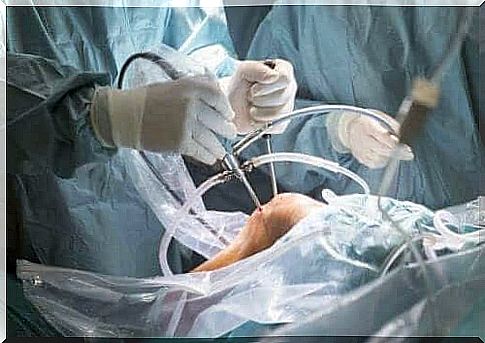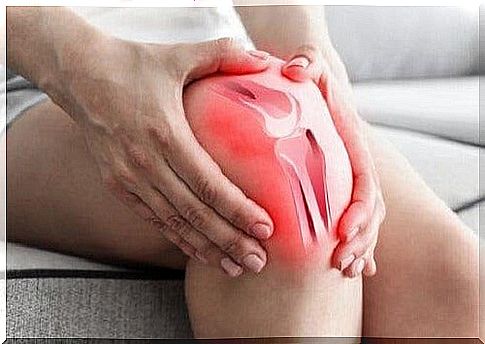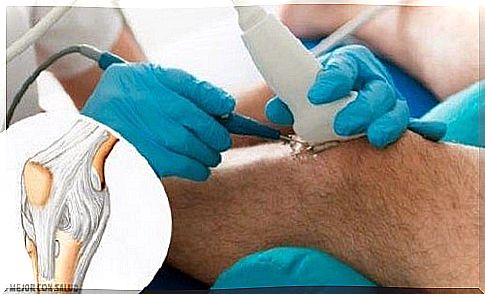Knee Arthroscopy And Its Benefits

An arthroscopy of the knee, also called keyhole surgery, is a surgical procedure. They use it in trauma surgery and in orthopedic surgery. This technique makes diagnosis easier and helps to treat many diseases of the joints.
This technique is a much less intrusive method than other techniques. Still, it is important to note that knee arthroscopy is a surgical procedure. For those reasons, only trauma and orthopedic surgeons are allowed to perform this procedure.
A camera provides images of the knee for surgeons to view. To do this, only a very small incision is needed. It hardly leaves a scar. Therefore, it is also a non-invasive procedure that reduces the duration of the admission.
In most cases, patients return home the same day to facilitate recovery.
An arthroscopy of the knee is the best approach in the following cases

This technique allows the specialists to see the inside of the knee in a minimally invasive way. They use it to view multiple problems or injuries.
After all, there are several diseases and injuries that can damage different parts of the joint. Here are some of them:
- The bone
- The cartilage
- ligaments
- the meniscus
- tendons
- The muscles
An injury to the ligaments
Cruciate ligament injuries require knee arthroscopy to make an accurate diagnosis. There are two types: anterior cruciate ligament or posterior cruciate ligament problems.
The anterior cruciate ligament is the ligament that controls excessive movement. It gets its name from the fact that it crosses another ligament. This other ligament is the posterior cruciate ligament. It is attached to the posterior part of the shin bone.
This type of injury is very common. It usually occurs after a vigorous twisting motion. One speaks of an ‘unfortunate trinity’ when there is a ruptured one:
- meniscus
- anterior cruciate ligament
- medial lateral ligament
In a young and moderately active person with this discomfort, it is important to reconstruct the ligament. After all, it often causes a degenerative disease of the joint and can lead to problems of the meniscus.
A torn meniscus

For both diagnosis and recovery, doctors often resort to this technique in people with a torn meniscus.
The meniscus is fiber cartilage that performs important functions in the knee.
- It is a system that absorbs shocks.
- The meniscus protects the cartilage.
- It improves the functioning of the joint.
When the damage has just occurred and is not too extensive, specialists can sometimes repair the meniscus. During an arthroscopy of the knee, they can sometimes completely repair a torn meniscus.
The damaged meniscus can also be replaced with donor tissue. Meniscus transplants are performed using an arthroscopy of the knee.
Wear of the articular cartilage
The cartilage is a smooth elastic tissue that covers and protects the joints of the femur, shinbone, and kneecap. Osteoarthritis is the most common cause of cartilage problems.
Among other things, osteochondritis dissecans, infections, problems of metabolism and injuries can also cause these problems. There are several surgical options to repair or reconstruct the cartilage. These depend on:
- the age of the patient
- the activity
- the expectations
The benefits of knee arthroscopy

First, the advantage of this technique compared to other methods is that the surgeon is able to see the joint in its entirety. This is thanks to a small instrument called an arthroscope.
Yet another benefit of knee arthroscopy is that only a small incision is needed. Usually, this technique also leads to a shorter hospital stay and a quick recovery.
Fortunately, many patients undergoing knee arthroscopy can leave the hospital the same day of the procedure. Since these are small incisions, there is also a better aesthetic result, especially on parts of the body that are visible such as the knee.
However, you should remember that patients with various injuries or conditions undergo knee arthroscopy. That’s why you can’t draw any conclusions about how the recovery will go.
The specific situation of the patient will determine the time it takes for him to recover. Also, not all patients will respond to this keyhole surgery in the same way.









